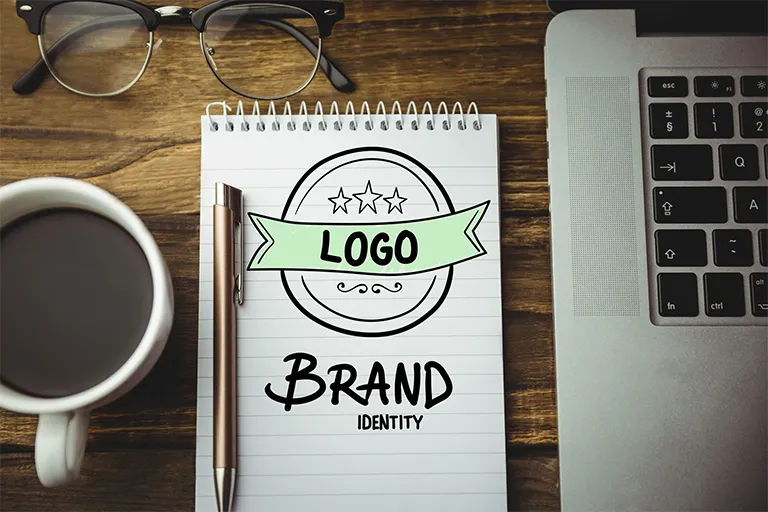Brand architecture is one of the key topics in the field of brand and branding . Brand architecture comes up when you have two or more products and you want to decide on branding for them. In other words, it is considered in branding for a basket of products.
So if you have more than one product in your business or are interested in learning about branding strategies in multi-product businesses , this article can probably be useful for you.
It is necessary to emphasize that there are various frameworks and names in the field of brand architecture. For example, consider Snap, which has brands such as Snapbox, Snaptrip and Snapdoctor under its umbrella. Some analysts call this model of brand management Branded House . While another group of brand analysts call this branding method Sub-branding .
Brand development
When you always use the brand extension strategy in your brand architecture, after a while you will have a wide range of products and services, all of which are under the umbrella of one brand. In branding literature, this strategy is called Branded House . It means that you have built a house and you have chosen a brand for it and you have placed all your products in this house.
Companies such as Samsung, Sony, HP, Siemens, and Danone have used the Branded House strategy in a large part of their products.
Many of us know Mehrgiah brand. A wide and diverse collection of teas are marketed with this brand. Now suppose the managers of this business also set up a tomato paste factory. What is the best name to choose for the products of this factory? What should be the branding strategy for the tomato paste product?
Is it better to sell tomato paste with the same Mehrgiah brand? Or is it appropriate to consider a completely different brand for the paste?
Now let’s assume that the same Mehrgiah collection decides to launch a publishing house. What do you think about the publishing brand? Is it the same plant? book seal Or basically an independent name and brand?
When we go to the second and third products, goods or services, such questions and concerns are raised and the answers we give to these questions will build our brand architecture.
Suppose you have a well-established and established brand and you have launched one or more products with that brand. Now that you have a new line of activity or product, one of the first options that comes to mind is to market the new product or activity with the same existing brand.
Imagine Samsung. This company markets its televisions and refrigerators under the Samsung brand, and when it decides to enter the digital camera market, it uses the same Samsung brand.
This strategy of using your existing brand for new products and activities is called brand extension. Because by doing this, you have practically expanded the territory of your brand and created a space for your brand to cover a wider range of products.
A group of branding experts and experts use the two terms Brand Stretch and Brand Extension interchangeably.
But another group believes that a distinction should be made between these two terms. This second group says that it is better to use Brand Stretch in cases where there is similarity between products. When Avila uses the same Avila brand for its sesame oil in addition to sunflower oil, it can be said that it has used the Brand Stretch model in its brand architecture. Also, maybe the use of plant stamp for tomato paste can be considered as an example of Brand Stretch.
On the other hand, Brand Extension is used when a brand is used for a completely different and unrelated product or activity. For example, the use of the plant seal for publications can be considered as an example of Brand Extension.
Of course, don’t forget that these divisions are somewhat subjective. For example, what criteria is there to consider tomato paste and tea as close? Maybe someone sees this product as completely separate and independent from each other.
Brand development strategy
There is no definite order or ruling in the field of brand architecture. No one can insist that this method is right or that method is wrong.
You can offer tomato paste with the Tekmacaron brand, which clearly mentions pasta, and people will buy it and be successful, as Tekmacaron has done.
On the other hand, it is possible to launch two relatively similar products under the exact same brand and not be successful, as car manufacturers gradually learned after many years of selling all their products under the same brand, that sometimes some models of their cars with Offer a different brand and do not expand the brand.
Some brands evoke exactly one specific product group. For example, when we hear the brand Iran Khodro, it is natural that we associate a car in our mind.
In contrast to some other brands, they simply evoke a set of features. Think of Bosch, for example. Bosch does not bring a specific product to mind.
Rather, it is more associated with features such as durability, quality and high performance.
Naturally, when your brand evokes a specific product group, choosing a brand development strategy is not so simple. But when your brand evokes a set of attributes, brand development can be defensible.
Compatibility of the brand with the product
Consider a hypothetical brand called Hadid. Suppose this brand offers shawls and scarves. One of the messages of “Hadid” is softness. If the brand goes for Brand Extension and wants to launch even an unrelated product like tissue, Hadid can still be used with the same message of softness and tenderness.
As another example, consider Bank Parsian. For many of its audience and customers, Parsian is associated with financial services. It is natural that when Parsian wants to start an insurance company, he comes to the conclusion that the same Parsian brand can be used and can go to brand development.
In contrast, consider a brand like Hepco. This brand is associated with heavy machinery and industrial products. If Hepco wants to enter the field of precision instruments one day, it may come to the conclusion that this brand is not very relevant to the precision and elegance that are the characteristics of precision instruments and decide to introduce a new brand.
Appropriateness can have different criteria. Among these criteria, the following can be mentioned:
- Complementary product: that a mobile phone operator uses its own brand to sell mobile phones. For example, let’s assume that the Irancell phone is released to the market. Here we are dealing with a complementary product.
- Same customer: Consider a brand like Adidas, which is best known for sportswear. Now this brand wants to offer a smart watch for the same athletes who are the customers of its clothes. A watch that controls and records running speed, calorie consumption, movement path, physical exercises, etc. It is understandable that Adidas uses the same brand for hours and does not go for a new brand.
- Attribute or benefit: Consider a brand like Armani that evokes luxury and makes its customers feel that they belong to a certain class of society. It is understandable that Armani would use the same brand for his clothes as for his hotels.
- Expertise: A brand like Siemens has instilled and established such a feeling that it benefits from high expertise in the field of electronics and telecommunications. Therefore, it is natural that every other product that is made based on the knowledge of electronics and telecommunications introduces itself with the same Siemens brand.
Brand effects on the product
Consider a brand like Gillette. Over the years, it has proven to its customers and audiences that it is a leader in research and development and that the products it offers are at the edge of their technology.
It is natural that after the release of products such as razors and shaving gel and foam, when Gillette decides to launch deodorants, it still uses the same brand as before.
The previous brand can be an asset for the new product and increase its credibility . It can also shorten the way to introduce the product . Because by seeing the Gillette brand, the customer can estimate the quality and performance of the product and be convinced to use this new product without extensive advertising and information.
Effects of the product on the brand
Sometimes brand extension is done with a different purpose. This time, it is not going to be spent from the existing credit for the new product. Rather, the new product or activity is supposed to add to the existing reputation.
We know that many educational institutions in Iran and other parts of the world prefer to have publications. Publishing doesn’t just mean a new business and line of business. It can also mean knowledge and expertise.
For many customers, the fact that an educational center has a large and powerful publication can mean that the center benefits from high knowledge and expertise in its field and is not limited to just one class and a few teachers. Publications can also convey the message that the center is considered a pioneer and intellectual leader in its field.
Therefore, it is natural that the educational institution prefers not to choose a different publication brand and expands the same existing brand to increase the credibility of the brand .
Alternative strategy for brand development
We are not going to always offer all our products and activities with the same previous brand. Another option is that the new product or activity has a new brand.
With this, after a while, we reach a collection of brands that many customers may not even know belong to the same collection. This strategy is called House of Brands and it is placed at the opposite point of Branded House where we have built a house and put different brands in it.
Many brands such as Oral-B, Gillette, Vic’s, Pampers, Crest belong to the P&G group. But people see them separately and may not even notice that they are paying for the same collection under different names and in the form of different products.
While Samsung built a Branded House, P&G Group preferred to go for the House of Brands.
There are many motivations for building a House of Brands. For example, sometimes business owners feel that by doing this they can give the customer a sense of choice.
Sometimes the brand identity is different and cannot be combined. BMW and Mini have completely different identities, even though they are both cars.
Also, sometimes the strategy of brands is different. For example, one brand wants to target the middle class of society and another brand wants to go to the rich.
Inducing a sense of independence can also be another motivation for launching a new brand. For example, many Iranian companies that are dependent on the government or large financial institutions of the country prefer that this feature does not cast a shadow on their products and services. For this reason, they create and develop independent brands and create a different image for them.
Although it is almost easy to keep track of which collection each brand belongs to, this independent imagery can still influence a large part of the target population. In addition, even assuming that the customer knows the relationship between the brands, this message can still be conveyed to him that the management model and strategies used in different brands are different.
So far, we got acquainted with two strategies, Branded House and House of Brands. But we are not always going to limit ourselves to these two limit states. Brand architecture has two other options. Options that are in the middle of these two:
- Using Endorsed Brands
- Using sub-brands or sub-brands
Sub-brand strategy in brand architecture
Sub-brand strategy is closer to Branded House. That is, it is also clear in the naming that the brands all belong to the same house and family. What is called Master-brand.
For example, the Snap group has gone to the sub-brand strategy and has created brands such as Snapmarket, Snapdoctor, Snapbike, and Snaptrip. The names clearly emphasize that all the brands belong to the same family. For this reason, we said that the sub-brand is close to the Branded House strategy. But at the same time, their separateness has been emphasized.
With this, a business achieves two seemingly contradictory goals at the same time.
The first goal is to show off its greatness and use its credibility. When a customer sees that a business has a large territory, they conclude that they are dealing with a powerful business and may be more likely to trust it. So every new brand that is introduced as a sub-brand has a shorter way to go. At the very beginning, SnapDoctor is far ahead of the independent business doing the same activity. Because people have a history of Snap brand in their minds.
The second goal is that the independent identity of the brands is preserved to a good extent. You may not be satisfied with SnapDoctor or SnapTrip services. But probably this dissatisfaction will not make you stop using Snapbox services. After all, you feel that these are different businesses and their strengths and weaknesses and the quality of their services are not necessarily the same.
Endorsed Brand strategy in brand architecture
Endorsed Brand is closer to Branded House. This means that new and almost independent brands are created. But the original brand, or the master brand, does not hide itself and reminds the customer that it is behind this new brand.
Think of products like Xbox or PlayStation. These names are completely established as independent brands. But Microsoft and Sony in the packaging and naming and information, fully emphasize that these brands belong to the master brand of Microsoft and Sony.
Although no one says I bought a Microsoft Xbox, everyone knows that Microsoft stands behind the Xbox.
In the same way that many people say that I bought a Surface. But then again, we all know that Surface is owned by Microsoft and supported by Microsoft.
Hyundai Genesis can be another example. Genesis is established as an independent brand and people usually say I have a Genesis or ride a Genesis. But Hyundai has not cut off its connection with this brand and the term Hyundai Genesis is not unfamiliar either.
As you can see, this strategy is close to creating independent brands. At the same time, the main brand tries to spend its credibility, identity and history for these new independent brands to the extent it deems appropriate and not leave them behind.
Finally, I emphasize again that it is not possible to give a definite verdict in brand architecture. It is not easy to say that this strategy is better than that strategy or that this strategy is wrong.
But when you recognize these patterns in brand architecture and look around you, you will gradually learn to analyze branding strategies and recognize the strengths and weaknesses of each strategy , and gradually, your ability to evaluate and recognize and analyze in This field will increase. In this way, if you have valuable analysis, we will be happy to share them with us.
















